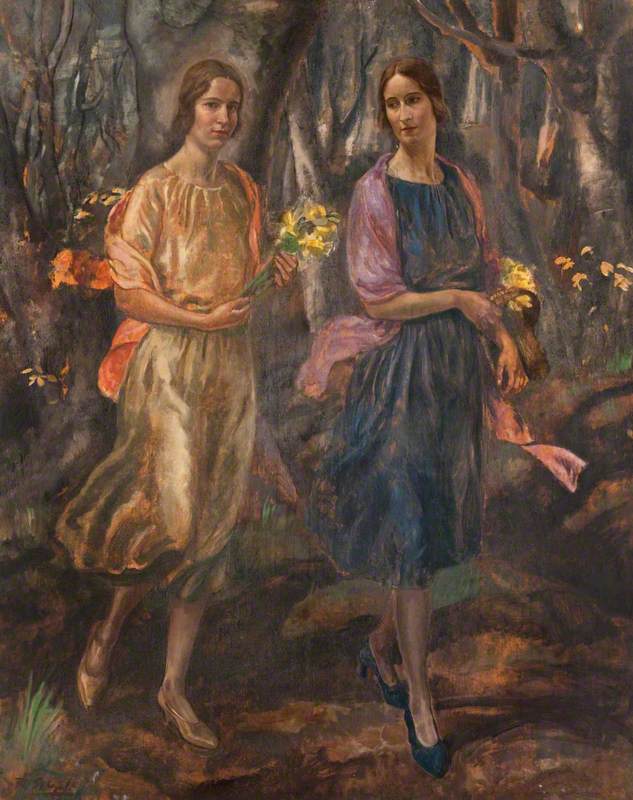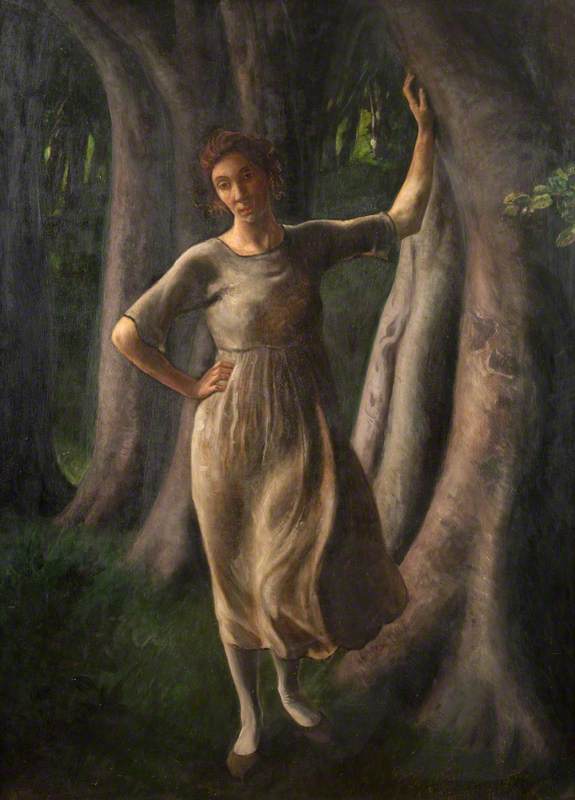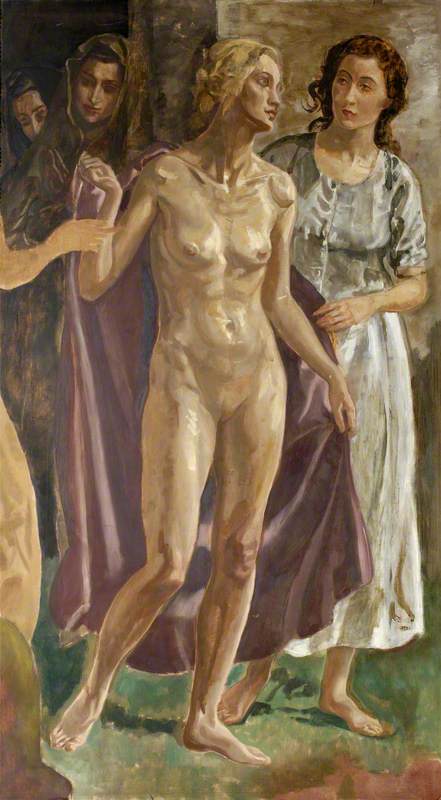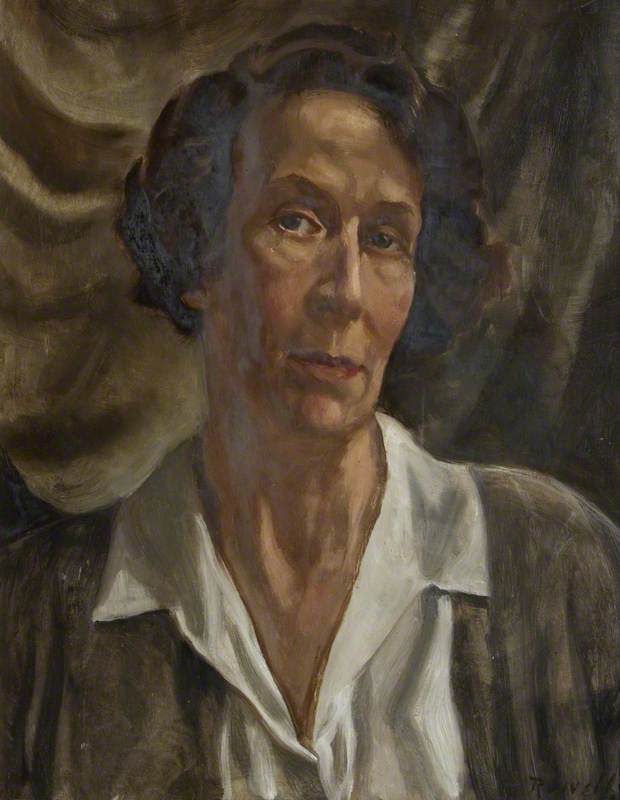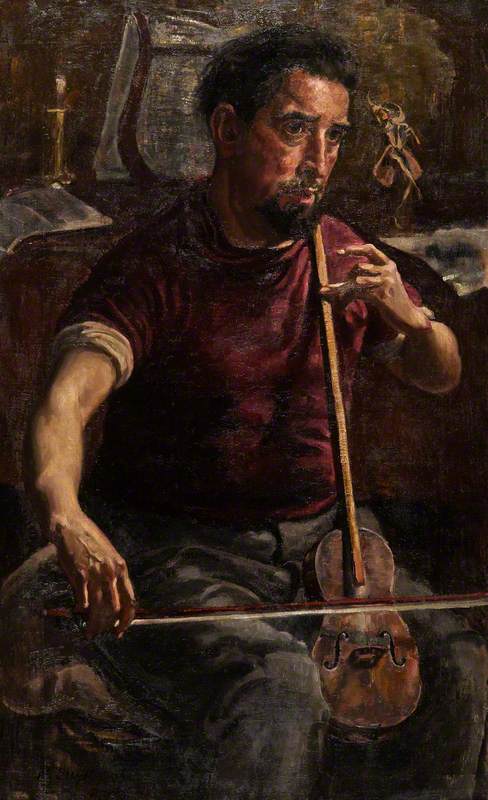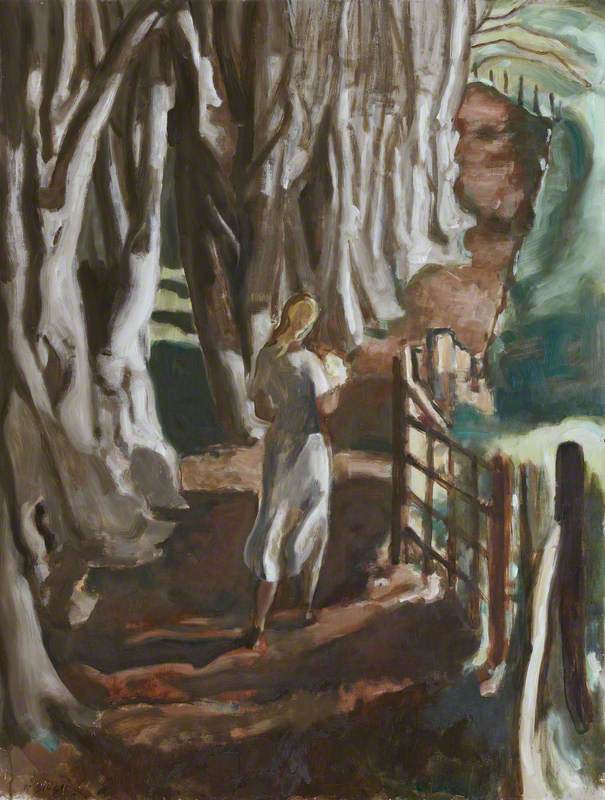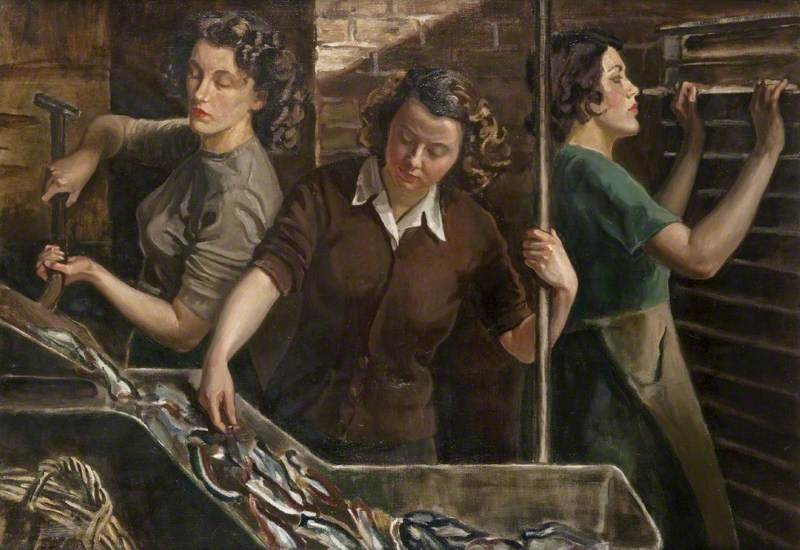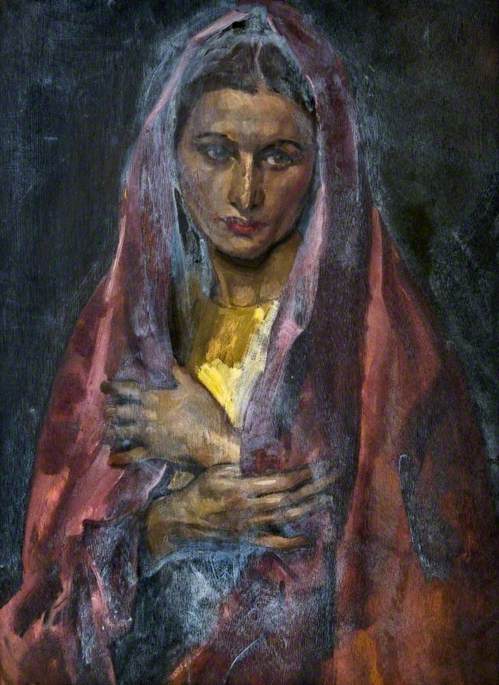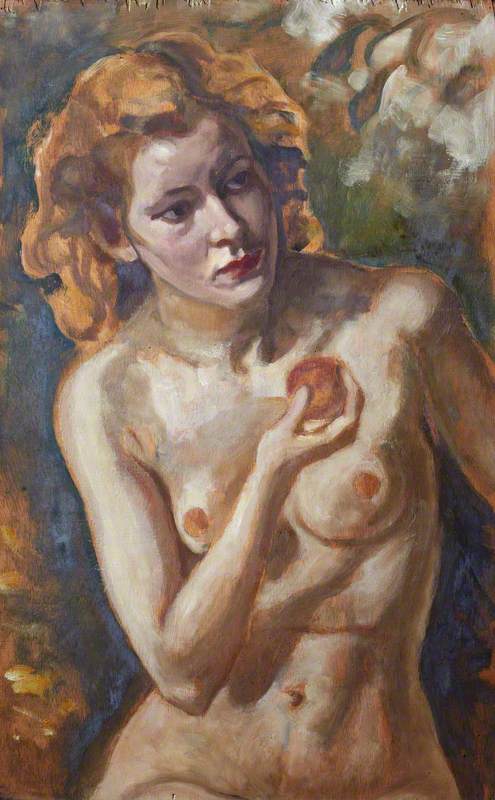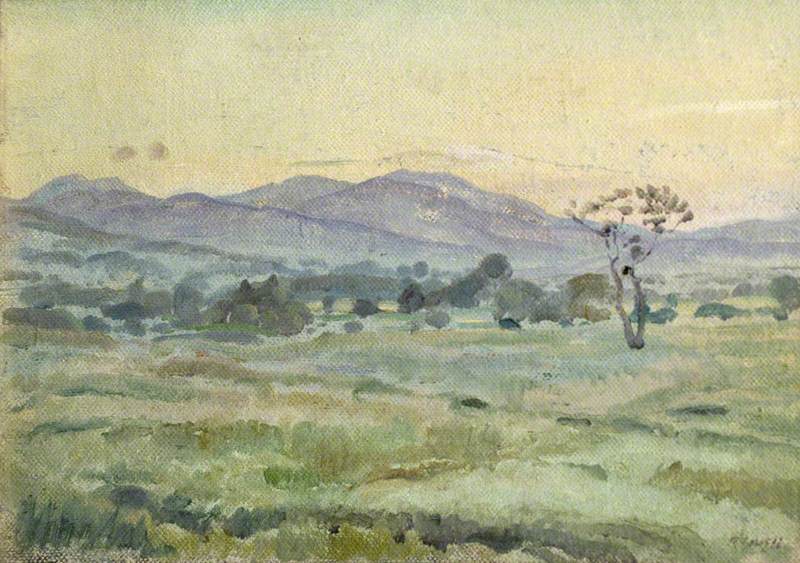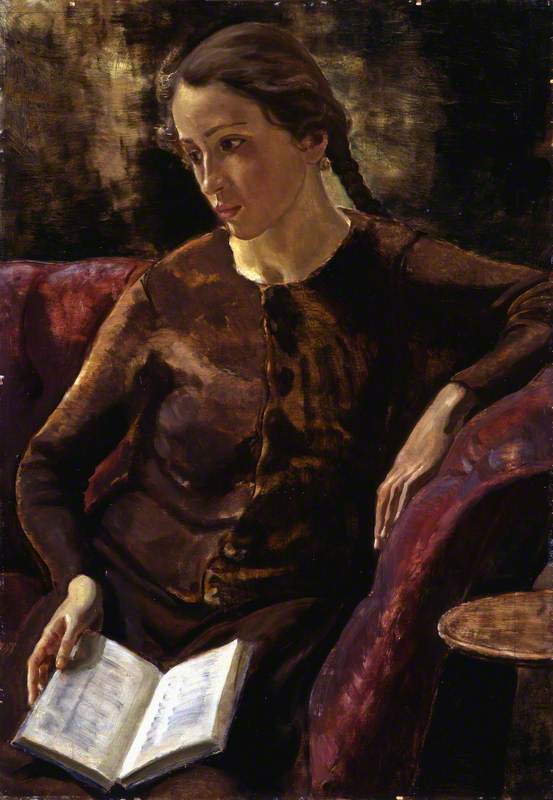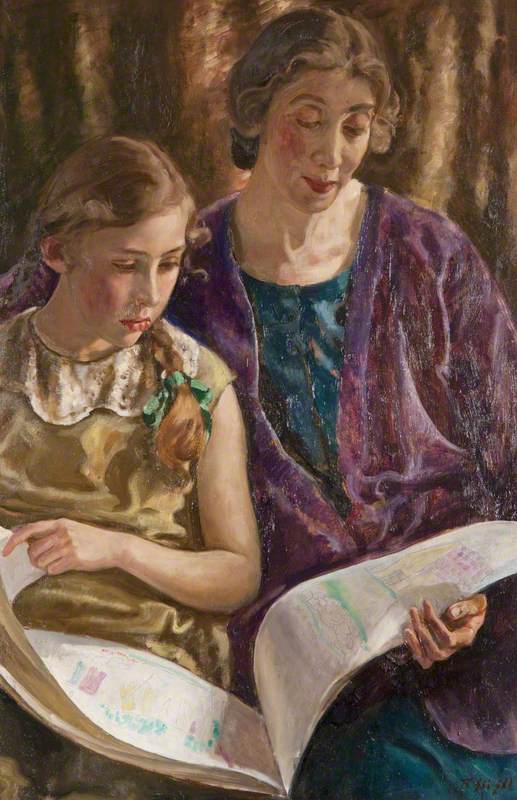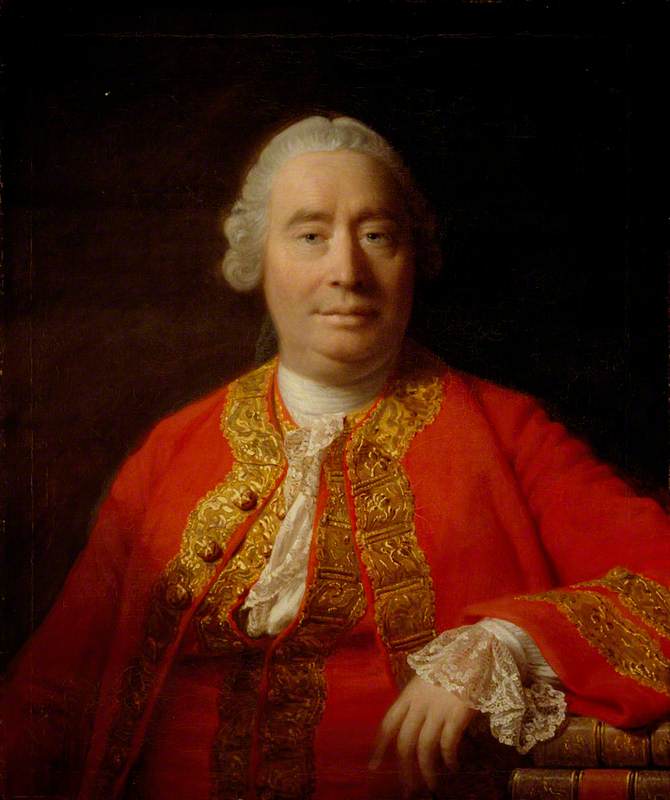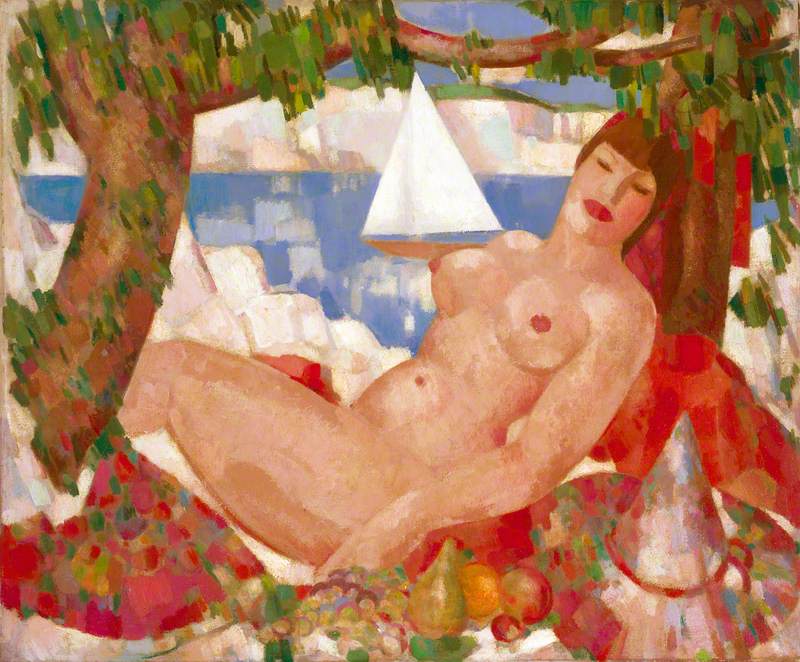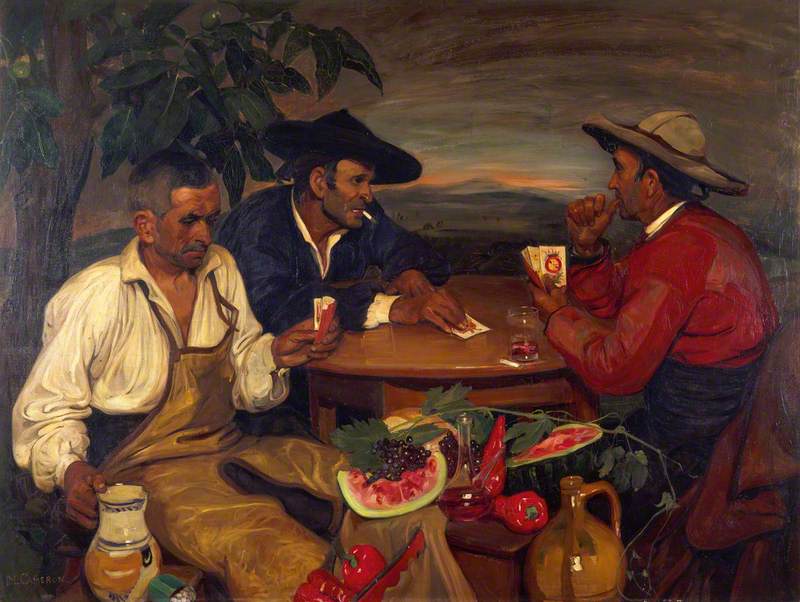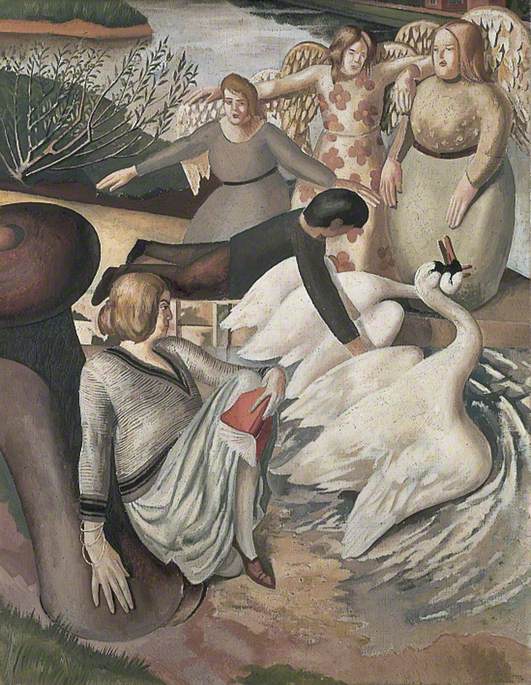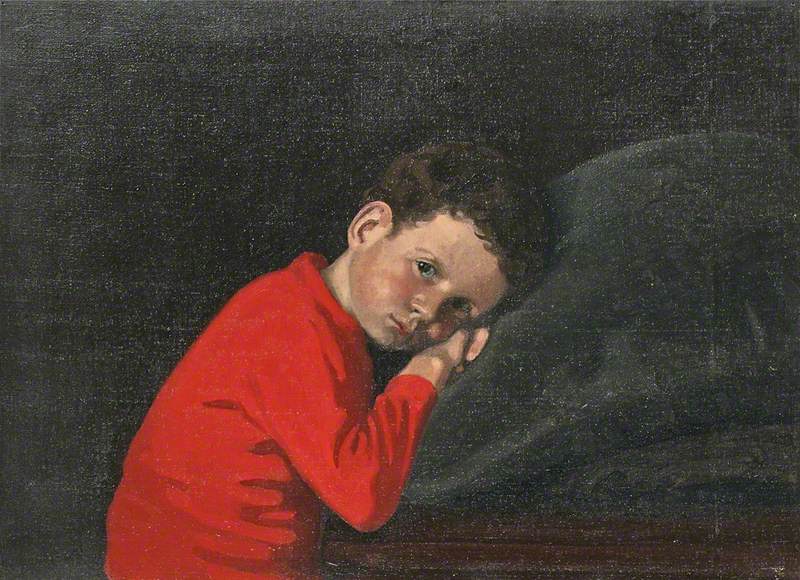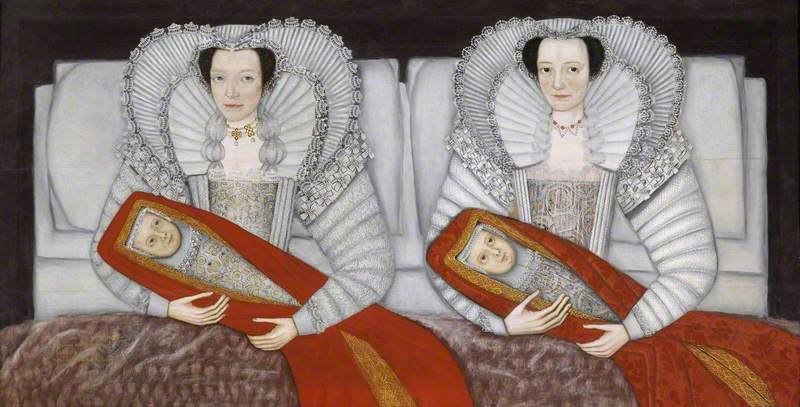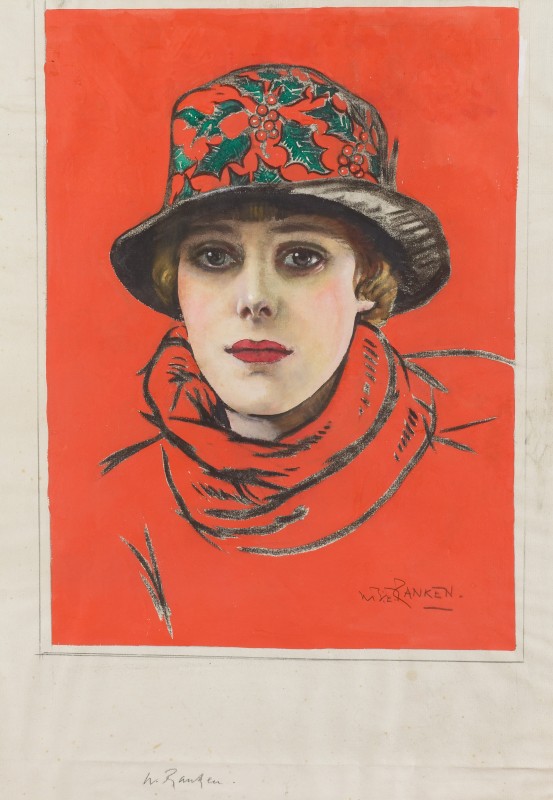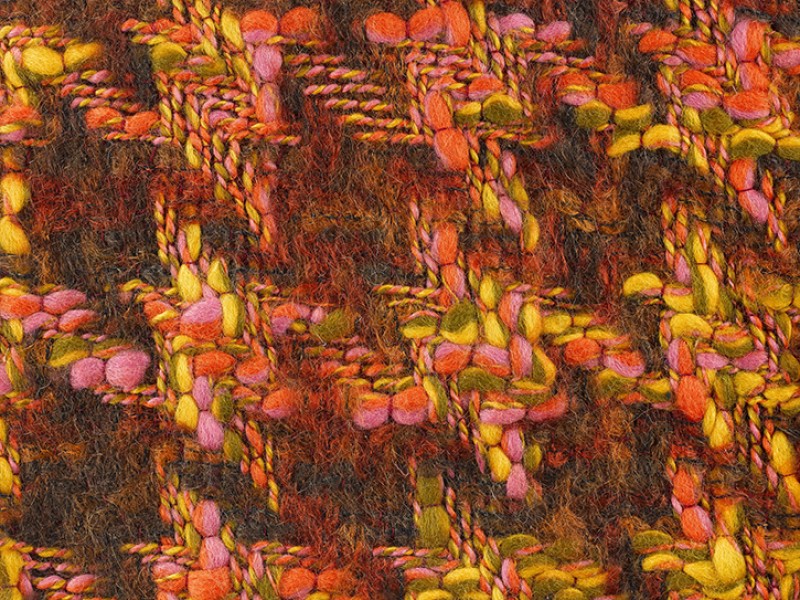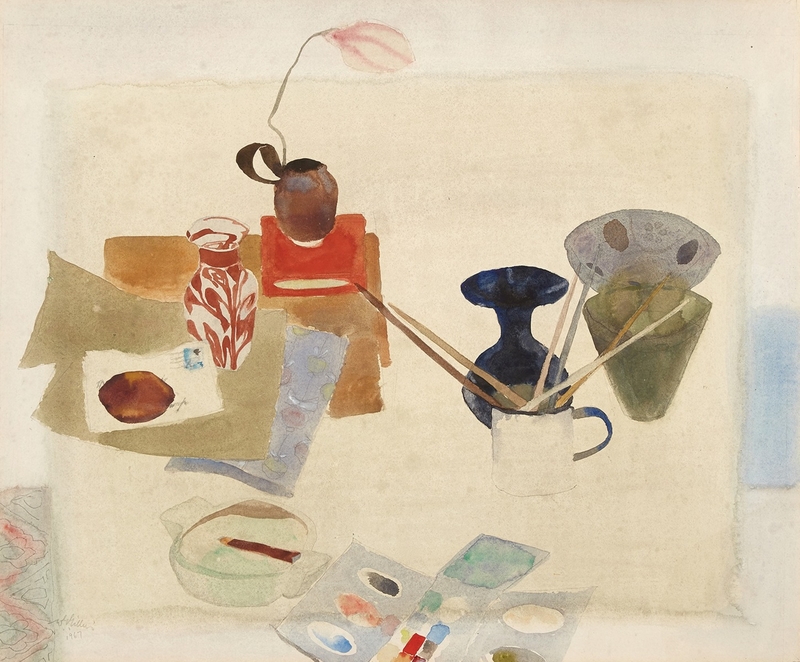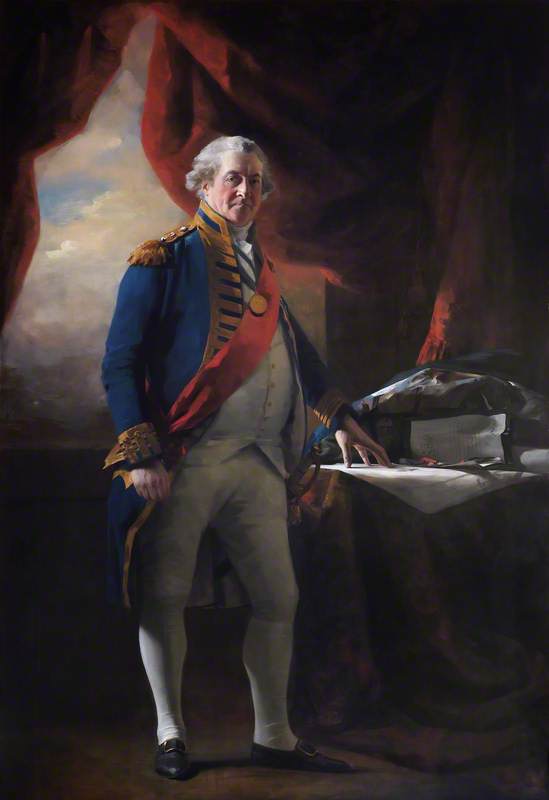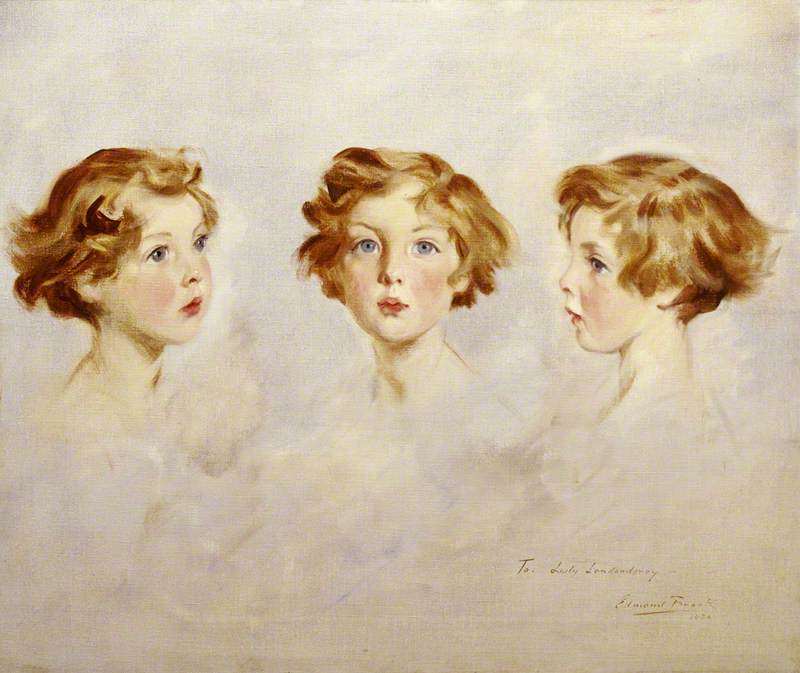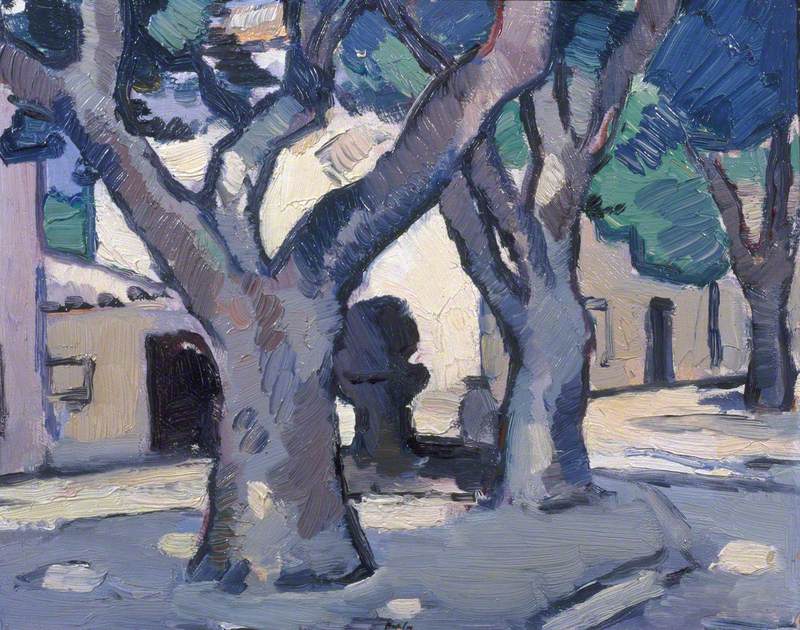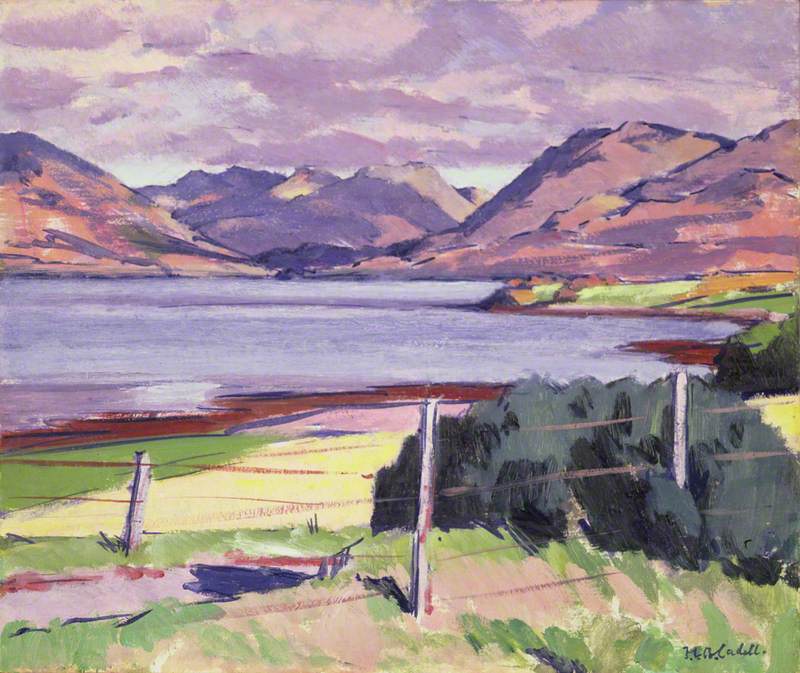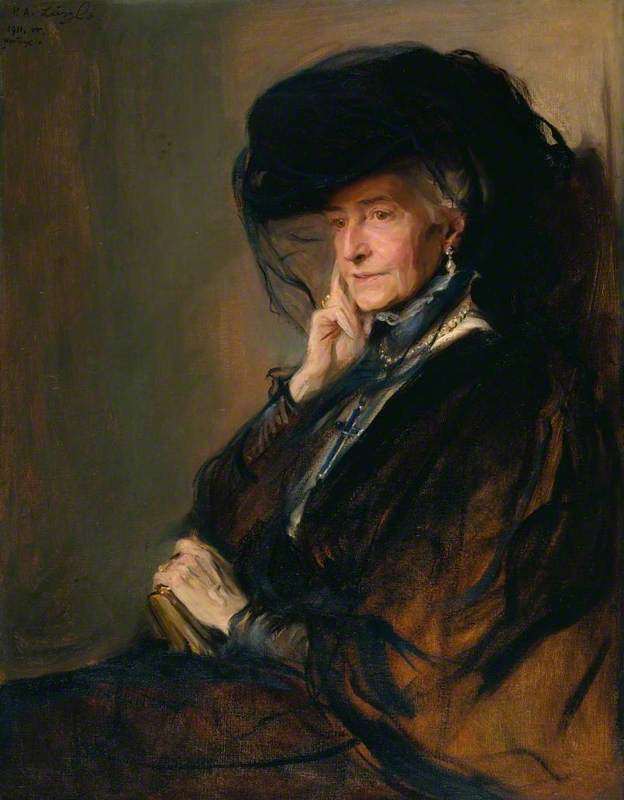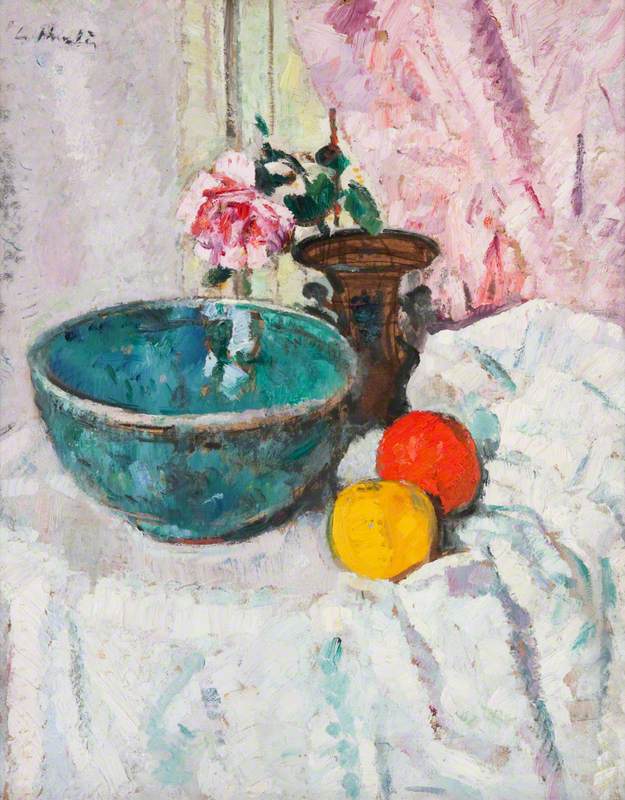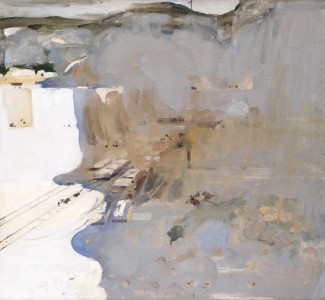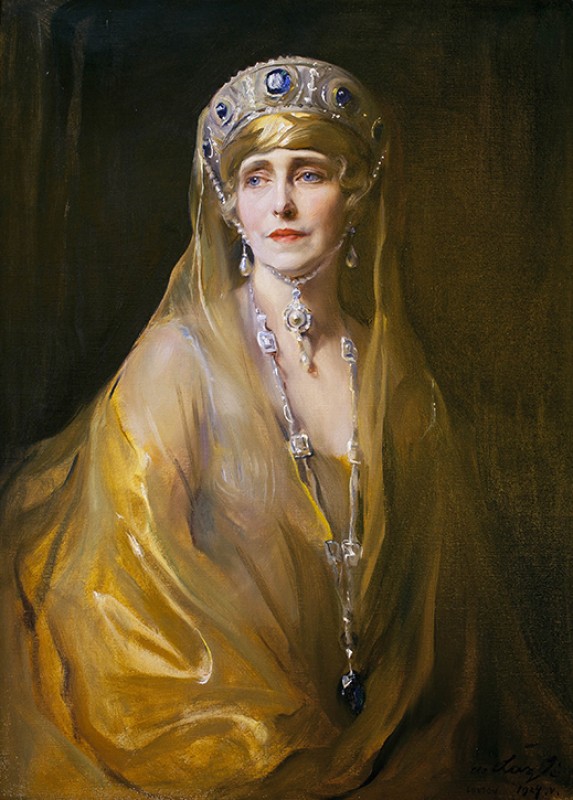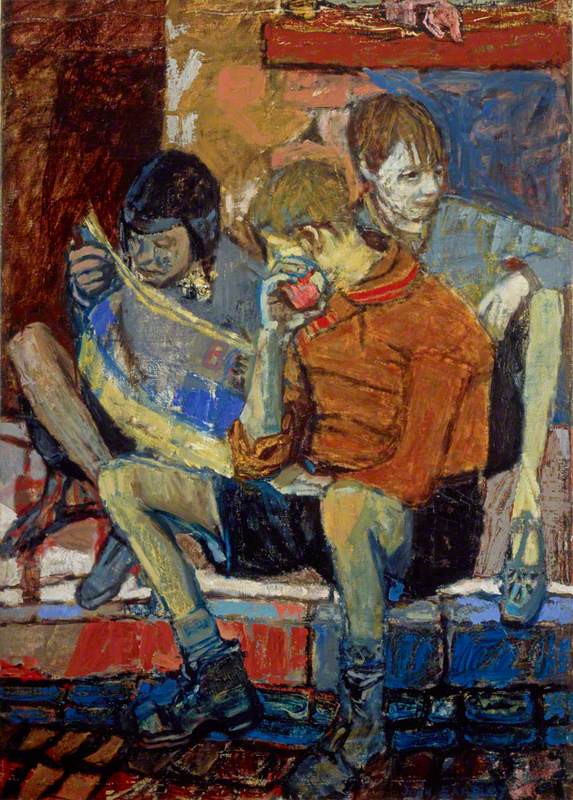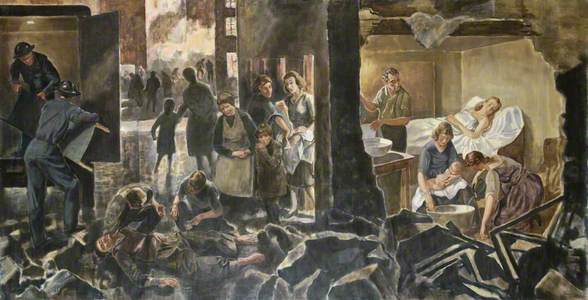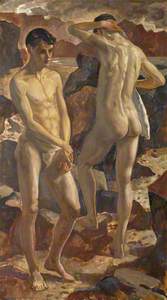Opinionated, irascible, fond husband and father, and a fine but often frustrated painter: this is the man I discover from my research. I knew my grandfather only through his paintings and his only daughter's fond memories; he died when I was three. When younger I admired his striking romantic self portrait in oil, always on display at home, but judged most of his work dark and dull. Now I find his early self portrait a bit stilted, but I have come to love his more mature work.
His self portrait, photos, and a fine portrait by friend and fellow artist Hamish Paterson, all portray a dark, handsome, romantic artist, and he had a flair for the dramatic that went beyond his appearance. He was lean, hawk-nosed, and olive-skinned, with a shock of black hair that turned stark white in later years. He claimed Mediterranean descent, seeing 'family resemblance' everywhere on visits to Italy, however he was born in Paisley, Scotland, as were his parents.
My grandfather was known to my mother, and to our family, as Bob, never 'Father' or 'Grandfather'. She was the only child of a doting father, and always spoke of him very fondly.
Mother kept several of Bob's paintings through her travels, bringing them across the Atlantic to the United States in 1964. Some, mostly oil on board, are still in the family. Although I did not like them when I was young, his skill was very evident even in rough sketches; I knew this was 'real art'. As a young would-be artist myself, I found this intimidating, and this had an impact on my own career choices.
Bob, then Mother, kept news clippings, exhibit catalogues, and many letters about his work. Eventually I took time to look at these, and to grasp some of Bob's struggles to establish himself as an artist. Earning a living was very necessary, and he started work as apprentice engineer.
Around 1914 Bob rejected his initial training to commit himself to art and painting. Bob had strong opinions about good art, and remained opinionated throughout his life, later developing quite a reputation in his chosen home town of Kirkcudbright in Galloway. He established himself as something of a rebel in the art world of Glasgow in 1919, when he collaborated with fellow artists to form the new Glasgow Society of Painters and Sculptors after some works were rejected by established institutions. Several members of this group, including Bob, achieved recognition, and in time became part of the establishment of their own generation.
During the 1920s Bob met and married Isobel Sayers (Belle), and his only child (my mother) Elspeth was born in 1923. Bob worked hard to find venues for his paintings, and obtain commissions for portraits. By the 1930s he was gaining recognition, with good reviews and a few distinguished prizes (in 1930 the Guthrie Award from the Royal Scottish Academy, in 1932 the Torrance Prize from The Royal Glasgow Institute of Fine Arts), and in 1939 Bob's painting of his wife 'Isobel' was selected by IBM to represent Scotland at the World Exposition in San Francisco. He was elected Associate to the Royal Scottish Academy in 1936 (and to Academician in 1943), however painting did not pay the bills. Bob took a post teaching art at Gray's School of Art in Aberdeen, where he remained until retiring as Head of Painting in 1953.
In 1998, my brother Harold visited the small town in Scotland where my mother, my brother, and my sister were born (I was born during my parents' stay in Alexandria, Egypt). While there, Harold acquired a copy of an art student's recent graduate thesis on my grandfather's work. The paper made a claim for a new recognition of my grandfather's artistic influence, through the work of several of his students.
The Medical Panel, Aberdeen University Union
(copy of an earlier painting) 1938–1954
Robert Sivell (1888–1958) 
When this paper was shared with my mother, it caused much flurry and excitement in the family. My mother felt compelled to write to the author and set him straight on some misstatements or gaps in the work. In doing so, she involved my sister and brother, and excavated great piles of papers from her past. I received a phone call in which my siblings reported, amid a scene of great hilarity, presumably involving beer or wine, that there were now two versions of my mother's letter; the one to be mailed to the art student, and a second, more entertaining one, for family eyes only! Unfortunately I cannot share any of the details of this second version.
The Pastoral Panel, Aberdeen University Union
(copy of an earlier painting) 1938–1954
Robert Sivell (1888–1958) 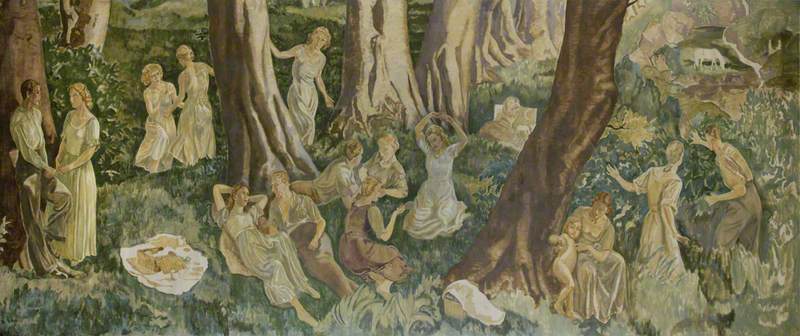
I am on a long, slow expedition to document my grandfather's history, and to locate more of his work. I would love to locate the plaster bust of Robert Sivell, made by his friend, sculptor Benno Schotz. Many works that were in the family at the time of Bob's death were left in Great Britain, in the care of his most skilled students. Several have subsequently been donated to the Aberdeen Art Museum, in a bequest from Albert Morrocco.
The Creation Panel, Aberdeen University Union
(copy of an earlier painting) 1938–1954
Robert Sivell (1888–1958) 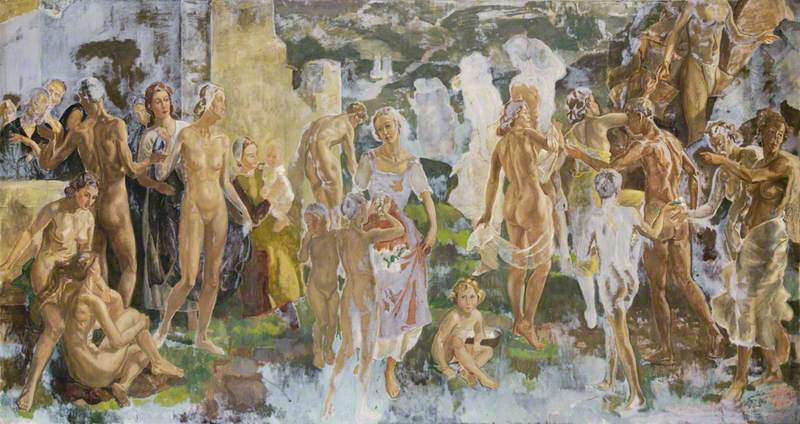
No complete listing of his work exists, but the Aberdeen Museum now stores 120 paintings (a mix of completed works and studies). At least one larger work has been carefully cleaned and restored, and several of these have been occasionally displayed. Other public venues with excellent work by Robert Sivell include the City of Edinburgh Council, Dumfries and Galloway Council, the Stewartry Museum in Kirkcudbright, Glasgow Museums, Gracefield Art Centre, the Hunterian, the Imperial War Museum, McLean Museum & Art Gallery, National Museums Northern Ireland, Paisley Art Gallery, Perth & Kinross Council, and Robert Gordon University. Images of most of these works can be viewed online on Art UK.
Sandra Stowell, granddaughter of Robert Sivell
